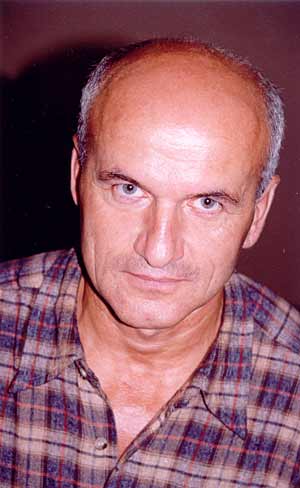Sergey Kharitonov, researcher at the Environmental Rights Centre Bellona, a former Leningrad NPP (LAES) employee turned whistle-blower and fired for his activities, made public an internal document of LAES, showing falsifications during repairs at one of its reactors.
“Report on investigation of violations in LAES’s operation” (3RZ-06-08-02, issued on August 29th 2002) documents, that while repairing the third reactor unit, the plant’s personnel installed used and defective flow-meters, instead of new ones.
“This report circulates only among the LAES directors. The forged documents on flow-meters, revealed by an internal LAES investigation, remind falsification of safety reports for nuclear plants in Japan,” — says Sergey Kharitonov.
What is a flow-meter
A flow-meter is a complicated device, installed on each of the 1693 fuel channels inside a reactor. The flow-meter is used to measure consumption of cooling water, which comes into the channel to turn into water-steam mixture. In the separating chamber the mixture divides into water and steam, and steam goes on to rotate the turbine and produce electricity.
The cooling water passes through the flow-meter at a high-speed pressure of 80 atmospheres, and at a temperature of 270 degrees Celsius. And the Lack of reliable control over water consumption may result in a nuclear accident, if some loose object obstructs the channel.
In 2000, the first reactor unit of LAES was shut down, because a rubber object got into the reactor channel. The object blocked the water circulation and a serious accident was avoided only because the flow-meter had shown in time that the water circulation had stopped.
Each flow-meter has a permit, and inspectors from various departments — reactor, thermal automatic machinery, and nuclear safety — have to certify it.
Forgery
The third reactor unit of LAES had been under repairs for nine months. The goal of the repairs was to extend life-term of the equipment designed — life of the unit expires in 2009.
The investigation showed that during the repairs personnel installed already used flow-meters. Total number of the ‘old’ flow-meters was 241 out of 1693. Old flow-meters were installed not by mistake, but intentionally — shows the investigation report. Signatures of nuclear safety inspectors were forged in the permits of 231 flow-meters. Those were the old flow-meters, which broke on August 5th 2002, while launching the third reactor unit.
When 14 flow-meters failed, LAES authorities carried out an investigation, and when it was revealed that old flow-meters had been installed, the third reactor was shutdown. From September 2nd to September 4th, LAES changed 241 old flow-meters to the new ones. On September 6th, the unit or reactor was restarted at its rated capacity.
To hide the fact that these flow-meters had already been used in the reactor, and to lower their radioactivity, LAES personnel deactivated and polished them in the chemical department.
“There are suppositions, that new flow-meters were stolen and sold to some other nuclear plant, for example, to Kursk nuclear power plant”, — Sergey Kharitonov says.
Investigation Report
But even the LNPP internal report cannot be named an objective document. For example, this report reads the event did not result in the shutdown of the reactor, the cut in electricity production or the irradiation of personnel. But even the official LAES’s Vestnik LAES paper, admits that the reactor was shutdown and energy was under-produced while defective flow-meters were being replaced with new ones. Speaking about personnel, they undoubtedly were exposed to additional irradiation while carrying out the replacement of flow-meters.
Bellona claims this event needs federal investigation, and its results should be published.
“We’re all afraid of terrorism. LAES doesn’t need explosives for a nuclear catastrophe. For this, it’s enough that personnel forge documents and installs defective equipment. Bin Ladens are working inside Leningrad LAES,” — Sergey Kharitonov says.




